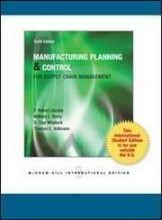Green product & service design + Life Cycle Assessment - Tutorial 1: Sample exam questions & discussion questions - Sample exam questions
5 important questions on Green product & service design + Life Cycle Assessment - Tutorial 1: Sample exam questions & discussion questions - Sample exam questions
Company X would like to focus on employing more sufficiency approaches in their business model and operations. What would be the first step to start with?
a. Acquire the ISO 14000 certification on environmental management
b. Implement a plan for consumer education, awareness and communication in order to stimulate demand
c. Adopt various life-cycle assessment techniques to measure their emissions level
d. Implement a reverse logistics system in their supply chain
Why did compliance-based approaches to manage sustainability in supply chains have only proved limited results?
a. Factories in developing countries are typically owned by locals and they usually treat the employees’ worse (as opposed to factories owned by foreigners).
b. In developing countries the rule of law is typically weak.
c. They account for local socio-cultural environments in various developing countries.
d. They promote a functional division of labor with a focus on “us versus them” dynamics which is counterproductive for collaboration efforts.
A package carrier firm would like to optimize their last-mile operations in urban areas. What would be the best strategy for them to consider?
a. Reduce the number of orders delivered
b. Increase the delivery density in their delivery network
c. Stop providing attended delivery to customers
d. Stop providing one-hour deliveries to customers
- Higher grades + faster learning
- Never study anything twice
- 100% sure, 100% understanding
It is unclear whether sharing economy models positively contribute to sustainable development because of the following reason:
a. Major players in the sharing economy do not emphasize much sustainability as their goal. b. First-order effects (e.g. efficient use of resources) have an ambiguous impact on the level of emissions.
c. Economic gains contradict the sustainability connotation of the sharing economy.
d. Second-order effects (e.g. how the “freed” monetary capital is reused and re-distributed) have been unexplored empirically.
Please read the following two statements and mark the correct answer:
A. “In contrast to crowd logistics, traditional logistics activities pursue multidimensional motivations”.
B. “From an operational perspective, crowd logistics entails a wide range of professional skills outsourced from the crowd”.
a. Only statement A is true
b. Only statement B is true
c. Both statement are true
d. Both statements are false
The question on the page originate from the summary of the following study material:
- A unique study and practice tool
- Never study anything twice again
- Get the grades you hope for
- 100% sure, 100% understanding






























